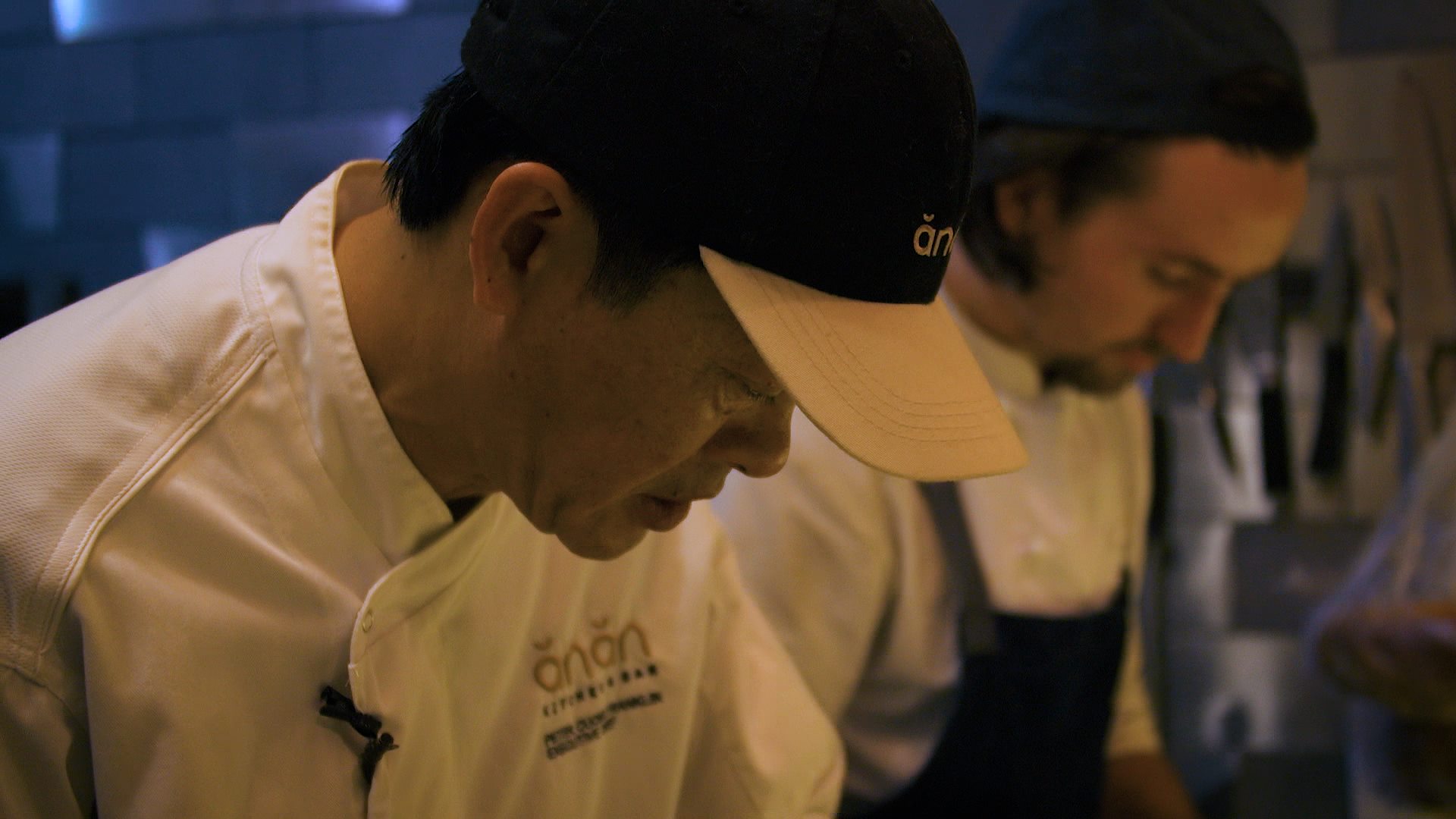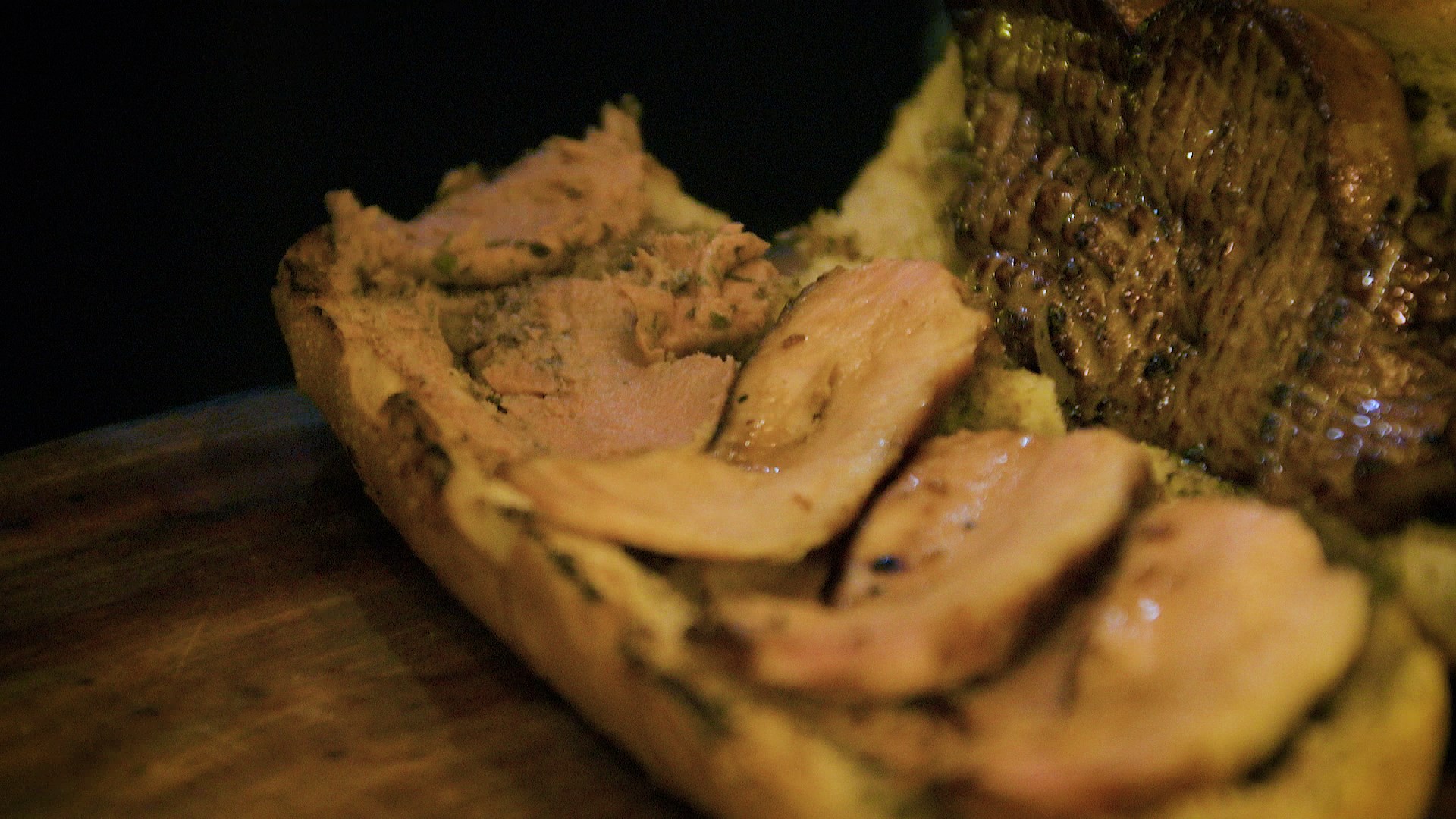It’s hard to tell whether chef Peter Cuong Franklin is absolutely crazy or an absolute genius.
In a city where the average monthly salary is roughly US $200, this gastronomic deviant is slinging banh mi for $100 at his newly opened restaurant, Anan Saigon. As a reference point, the street value of Vietnam’s most famous sandwich—a baguette spread with pork, pâté, and pickled vegetables—is ubiquitously a dollar or less in Ho Chi Minh City, still known locally as Saigon. If you were to sell a banh mi for half the average monthly salary in Manhattan, it would cost in the neighborhood of $5,500. For a sandwich.
Videos by VICE
And where would you go if you were to start selling what is (as far as the chef is aware) the world’s most expensive banh mi? Maybe Hong Kong? Paris? San Francisco?
No, Franklin set up shop in the thick of one of Ho Chi Minh City’s oldest street markets, Cho Cu Old Market, where women squat over bubbling cauldrons of soups, from the Mekong’s sweet and fishy bún mắm to central Vietnam’s spicy classic: bún bò huế. You can throw a rock from his restaurant and hit at least three vendors selling banh mi for less than a hundredth of his price. The stones on this guy.
And, yes, people are actually buying it.

“The fact that we’ve been able to sell it to Saigonese customers is amazing. And then we’re also getting customers from other places,” says the chef, reflecting on the city’s evolving fine-dining scene. Ho Chi Minh City’s rapid modernization has seen a surge in affluence among both locals and expats, and it would appear that among them are many big banh mi fans. “There’s curiosity to try it. When we’re putting this thing together, we want something that’s fun and whimsy. It’s over the top, but at the same time we want to respect the banh mi sandwich.”
READ MORE: This Banh Mi Hot Dog Is an Ode to Two of the Best Street Foods
If people are buying it, I’m leaning toward the latter on the crazy versus genius spectrum. (Hell, at this point I’m thinking it’s entirely possible he somehow inceptioned me into writing this story about his restaurant).

Before we can make a decision though, we’re going to have to take a look at what exactly Franklin’s putting on this bad mama jama of a sandwich.
READ MORE: Hanoi’s Best and Wildest Banh Mi, from Pork Floss to French Fries
“We start out with a mayonnaise that has truffle inside of it and spread a layer on both sides of the bread and plop it on the grill,” he says. “You can eat that by itself and it’s damn good. Then, we add a layer of pâté. We’re using pâté made by a French charcuterie guy based in Da Lat [Vietnam]. It’s a beautiful product and we spread that on both sides of the bread. Again, you can eat it just like that and it’s all you need. Give me that and I’m happy.”

But of course, there’s more. Like the meat from a pork chop that’s too thick to properly cook on the grill, so he uses the sous-vide cooking method, which is essentially slow-cooking in a fancy vacuum-sealed bag at a precise temperature, for six hours.
“The advantage is the flavor and the texture are maintained and all the moisture stays inside,” he explains. When an order is placed, they take the pork chop out of the bag and throw it on the grill to get that charred, smoky flavor. “We use a cut that has a good amount of fat-to-meat ratio,” he adds. “Part of the belly is in this pork chop. It’s almost a whole pork chop inside this banh mi.”

Now, it’s time to add the foie gras. “When you go to a French restaurant and have foie gras, you get one piece, because it’s very rich, and it’s usually about 30 to 50 grams. It’s flavor overload,” the chef tells me. “For this sandwich, we do about four pieces. Each one is about 40 grams and we put four of those bad boys inside. We sauté it so when the fat comes out as it’s cooked—and this is a beautiful thing—we’ll then use it to make the sauce. We season it and drip it on all of the sandwich afterwards.”
The art of the banh mi, though, is a balancing act, and with this in mind, an assortment of herbs and vegetables are added on top. Cilantro, cucumber, basil, and mint—or as Franklin refers to this mix, herbes de Saigon—add a crisp, crunchy twist that rounds out all of the flavors.

“This thing can now feed one very hungry American or a couple of Vietnamese,” he jokes. What kind of side do you serve with a $100 banh mi? Sweet potato fries dipped in caviar, of course. Or, if that’s too decadent, you also get some of that truffle mayonnaise for dipping.
Lastly, two glasses of prosecco come to wash it down, and adding up the sum of all the parts, that hefty price tag doesn’t sound entirely ridiculous anymore.
WATCH: How to Eat Pho
“If you want to be [a] game-changer, you have to be willing to take risks and take a hit sometimes,” Franklin says. “I’ve done this enough times now that I know what’s coming my way. With the banh mi, I was prepared for that, but part of the reason for doing it is because I think it’s good for food to create conversation.”
As we’re wrapping up, he nonchalantly shares, “I’m working on a $100 phở.”
Oh, you sly dog.




